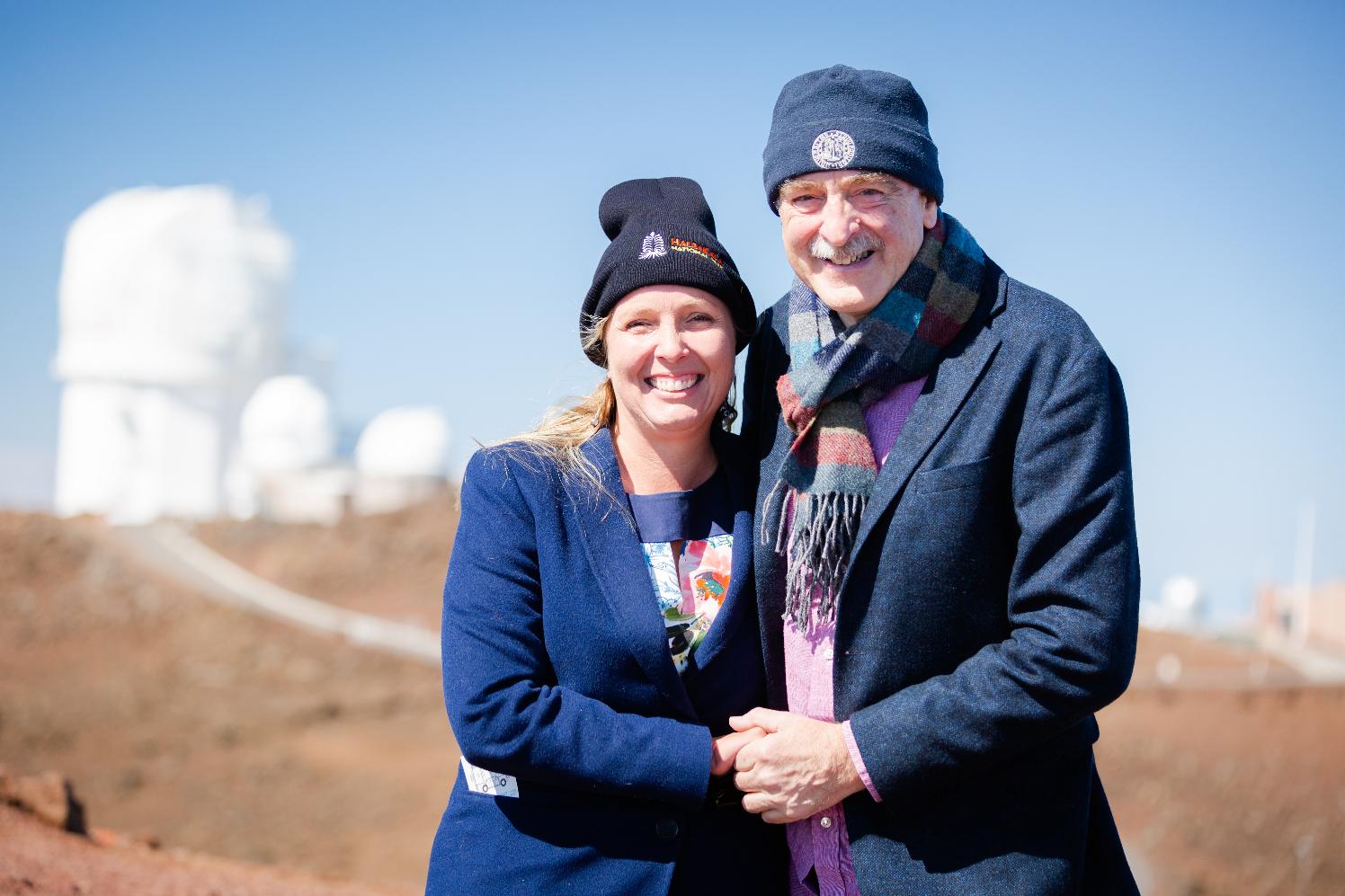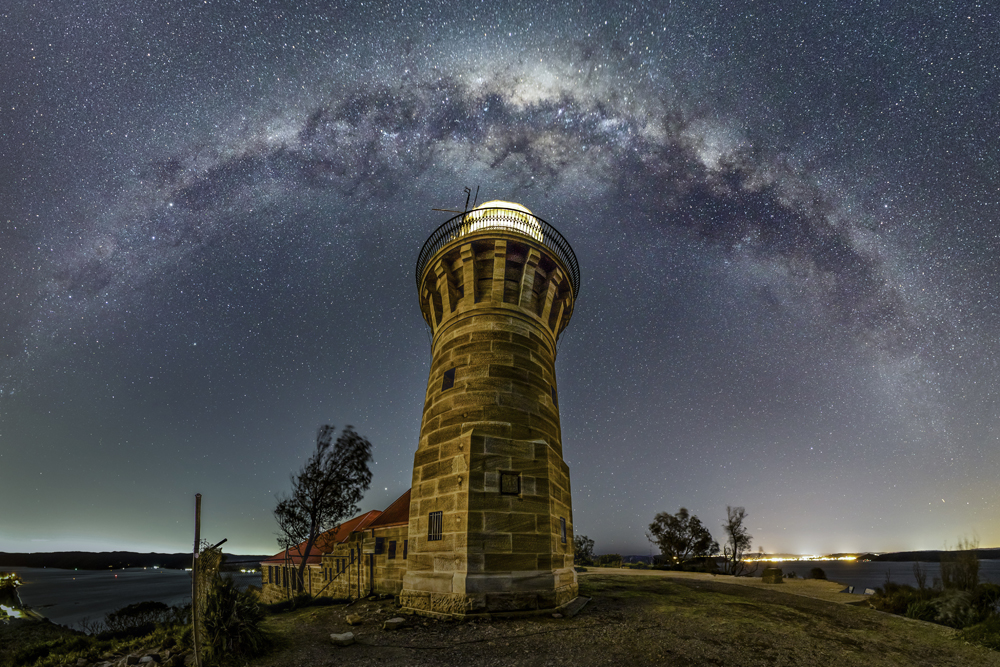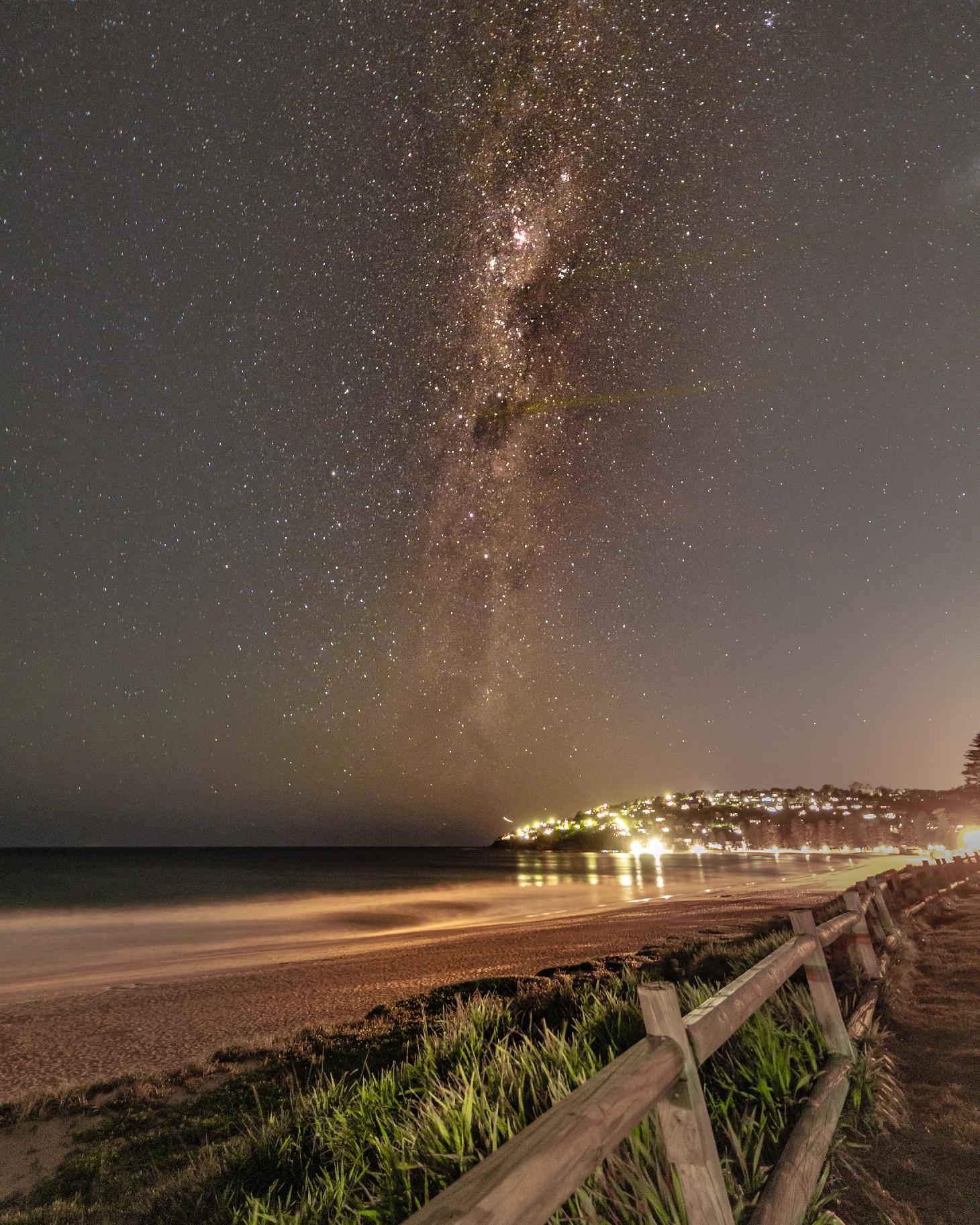Palm Beach Headland becomes Australia’s first Urban Night Sky Place: barrenjoey high school alumni marnie ogg's hard work realises long-held dream for everyone

In an Australian first Palm Beach Headland has been designated as an Urban Night Sky Place (UNSP) by DarkSky International.
The designation demonstrates how good-quality lighting and design can reduce the impacts of artificial light on the natural night-time environment and open up opportunities for better viewing of the night sky.
The designation is due to the work undertaken by Avalon Beach lady Marnie Ogg and the support provided to her by former Councillor Kylie Ferguson.
Marnie managed Sydney Observatory before devoting her time to one of her passions: preserving the night sky.
In July 2016 Marnie successfully saw the Warrumbungle National Park designated as Australia's first Dark Sky Park under then Minister for Planning and Pittwater MP Rob Stokes. Since then she has spent her time re-engaging people with the natural heritage of the night sky and reducing the impacts of lighting pollution. In 2017, Marnie was awarded the Dark Sky Defender Award, presented by the International Dark-Sky Association.
Her activities in preserving the night sky, include starting the Australasian Dark Sky Alliance. Everything ADSA does is underpinned by science-based evidence gathered by researchers in the field of Light At Night.
The Australasian Dark Sky Alliance is a volunteer, non-profit charity, educating the public and policymakers about night environment conservation. With light pollution at night increasing by 2% year on year, it is one of the fastest-growing pollutants in the world, leaving only 20% of the world's population a sky full of stars and impacting on nocturnal wildlife as well.
The Australasian Dark Sky Alliance's Mission is to:
- Educate the public and policymakers about night sky conservation.
- Promote environmentally responsible outdoor lighting.
- Create business opportunities that support night sky preservation.
- Empower everyone with the tools and resources to help bring back the night.
- Support communities to create IDA Designated Dark Sky Places in the Southern Hemisphere.
When the designation was confirmed Marnie said, ''Since 2018 I've been championing this concept; doing the first dark sky measurements to see if it was viable; writing to businesses to see if they would support it; meeting with Northern Beaches Council councillors, National Parks, and lighting companies for their buy in; organising the first dark sky event on the site; and collaborating with Northern Suburbs Astronomical Society to show people the night sky from this magical part of Sydney.
Thank you to former Cr. Kylie Ferguson for all her hard work in putting the motion forward and up the ranks in council, to the team at Northern Beaches Council who have done the legwork since to make it viable and all the community members who supported the concept from the beginning.
Congratulations!
I am exceedingly proud and delighted to know there is one more patch of dark sky being preserved in Australia.''
Kylie Ferguson steered the proposal through Council in 2021. Cr. Ferguson said then:
''The benefits of an Urban Night Sky are wonderful. Decreasing light pollution is a good thing on many levels. It allows people to enjoy all the starry sky has to offer. It is also important to our health, improving our circadian rhythms as well impacts of light pollution on migratory animals such as turtles, seabirds and moths has been well documented. These animals use the light from the stars to guide their journey.''
Marnie explained:
''Urban Night Sky Places are relatively new to the suite of designations organised by the International Dark-Sky Association. Unlike their bigger areas of designation (Parks, Reserves, and Sanctuaries) which are often very remote, a long drive from a capital city, and may never be visited by the general populous, UNSP must be within a 50km radius of a city.
My comparison with an Urban Night Sky Place is a zoo. A zoo will never replace a wild or natural environment, but they play a part in our ever education and conservation. The night sky above Urban areas may not be the most pristine or display the most amazing night skies but they provide a valuable gateway for people who may never have seen a naked-eye planet or the arm of the milky way to make that first step into exploring the universe. They also provide a working demonstration of 'good lighting' that keeps people safe and feels warm and inviting.''
In her Profile interview Marnie expanded on that:
''When I was a kid it wasn't uncommon for our summer days to be filled with running through a sprinkler that was turned on in the morning to soak the garden, and turned off just before sunset. Water was used without consideration of how it flooded onto footpaths or dripped out of taps.
This may sound strange, but to me, this is how we use light now. Lights are left on all night and are beaming light into the environment even when there is no one there who needs it. Light may feel benign but ecologists are understanding more and more how disruptive this is to the natural processes of the environment. 3.6 billion years has seen animals evolve to require the cover of darkness to forage, to learn to fly to rest and restore, and in 150 years of artificial light at night we have dramatically changed some of our environment to exist with 24 hours of light. This is disrupting breeding patterns, migration, pollination and human well-being.
By simply considering when to use light, reducing the intensity and increasing technologies such as dimmers, timers and motion sensors we can greatly reduce the impact of light on our natural environment, reduce our carbon footprint and increase the number of stars we can see in the night sky too.''
In explaining the benefits:
''First and foremost, the benefit of an UNSP is that it celebrates and preserves the natural asset that we have in the Northern Beaches - access to the night sky. It is remarkably rare to be so close to a city and yet still able to see the night sky so clearly. This is partly to do with the fact that the headland is surrounded by water and national parks but is also due to the great work that council and local residents have done to maintain relatively low levels of light pollution in the area. Streetlighting intensity is quite low and there is little advertising or entertainment light that is wasted light spilling into the environment. (Although changing with the number of billboards that are changing over to LED advertising)
By designating the headland a DSP this becomes a working demonstration of good lighting, immersing visitors into an environment where they can see and experience first hand safe lighting environments and the night sky at the same time. My experience with this is that people are surprised by just how little light you need, and how comfortable they feel in these conditions. A little like bonfire nights, people seem to bond, come together and tell stories when light is warmer in colour, and less jarring to your eyes.''
A UNSP aims to preserve a dark sky experience for visitors and educate people on the benefits of proper outdoor lighting that ensures public safety while protecting the night sky.
Positioned on the northernmost tip of Palm Beach, the Place covers 62 hectares and incorporates Governor Phillip Park and Barrenjoey Headland, which is part of the Ku-ring-gai Chase National Park.
DarkSky International designates Urban Night Sky Places following a rigorous application process to meet specific program requirements.
Mayor Sue Heins said Palm Beach is already world famous and it’s incredibly special to be designated an Urban Night Sky Place.
“We’re extremely proud to be the first designated Urban Night Sky Place in Australia and the southern hemisphere. Through a lot of hard work and consultation with our community we can now join the 160,000 square kilometres of protected land and night skies in 22 countries on 6 continents.
“This designation is a testament to our commitment to preserving and celebrating the beauty of the night sky amidst urban environments. As cities expand and light pollution increases, it becomes increasingly crucial to protect and appreciate our connection to the stars above.” Mayor Heins said.
“This is an inspirational achievement for the Northern Beaches Council and the National Parks and Wildlife Service (NPWS). As the first UNSP in Australia, this initiative will inspire others to protect the area regionally and demonstrates to Greater Sydney the importance of good lighting practices to ensure safe public safety while preserving natural night skies,” Amber Harrison, Dark Sky Places Program Manager said.
Council worked closely with a Project Working Group including National Parks and Wildlife Services (NPWS), local business representatives and community representatives to prepare an application to DarkSky International. Council also worked closely with Ausgrid, who introduced a new street lighting type for biodiversity-sensitive areas that meets the Dark Sky requirements.
“Ausgrid is pleased to be collaborating with Northern Beaches Council to deliver a bespoke street lighting solution that meets the strict Dark Sky requirements. The luminaires we installed use the latest smart technology while providing safe lighting for the community,” said Jiri Heider, Ausgrid’s Council Manager, Lighting & Smart Solutions.
According to Phil Angilley of the North Sydney Astronomical Society and a member of the Project Working Group, “there is nothing better than seeing the look and excitement on the face of a person, young or old, the first time they look through a telescope”.
Supported by NPWS the aim of the application was to demonstrate a site with good lighting practices that allow for safe public use whilst protecting our night sky.
“This site is special, being a National Park and listed on the NSW State Heritage Register due to its rich natural and historical value. It will provide another reason for people to enjoy and respect such a beautiful location.” National Parks and Wildlife Service area manager Chad Weston said.
The site’s historical significance dates back to early settlement with Governor Phillip himself naming Barrenjoey Head. Since its discovery, people have come to enjoy the beach, picnics, and walk up to the Barrenjoey Lighthouse. The area is also famously known as Summer Bay to viewers of the popular Home and Away television show regularly filmed in the area. It’s also home to North Palm Beach Surf Life Saving Club, two top-rated restaurants, and a beautiful golf course.
By earning this distinction, the Council not only helps to preserve the natural wonder of the night sky but also creates opportunities for stargazing and astronomy education within our community. Stay tuned for upcoming events.

Barrenjoey Lighthouse - Photo Credit: Tom Elliott
About the International Dark Sky Places Program
Founded in 2001, the International Dark Sky Places Program is a non-regulatory and voluntary program encouraging communities, parks, and protected areas worldwide to preserve and protect dark sites through effective lighting policies, environmentally responsible outdoor lighting, and public education. When used indiscriminately, artificial light can disrupt ecosystems, impact human health, waste money and energy, contribute to climate change, and block our view and connection to the universe. Palm Beach Headlands now joins more than 210 Places that have demonstrated robust community support for dark sky advocacy and strive to protect the night from light pollution. Learn more by visiting their website.
About DarkSky International
The mission of DarkSky is to preserve and protect the nighttime environment and our heritage of dark skies through environmentally responsible outdoor lighting. Learn more at https://darksky.org/
